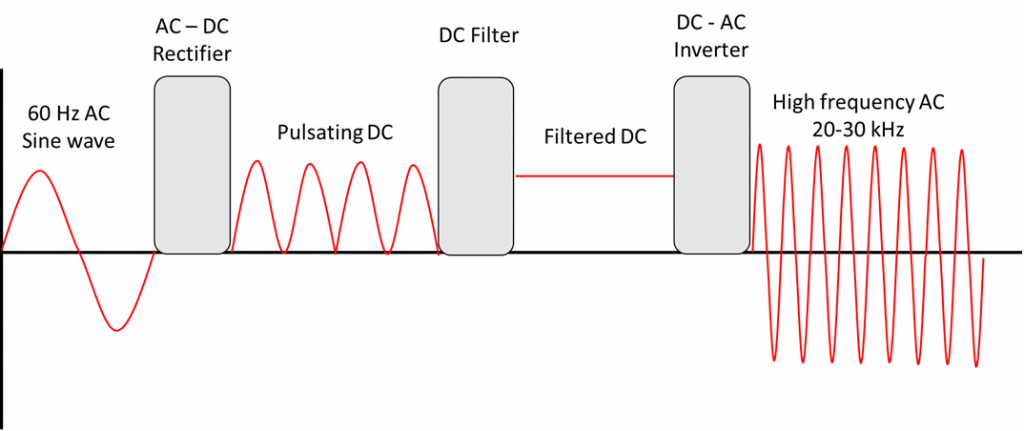27 Electronic Ballasts
Aaron Lee
Modern Electronic Ballasts do not have large inductive cores and coils of wire inside them. Instead, solid-state circuitry can rectify and invert AC voltages to change the frequency. The phosphor coating inside fluorescent lamps is more efficient at higher frequencies, so more lumens can be produced with less power.

Electronic ballasts efficacy is also increased because there is no core and coil to energize, nor is there a magnetic circuit creating heat, allowing for a cooler operation and resulting in up to 25% energy savings, depending on the lamp designation.
Electronic ballasts also create no noise when compared to standard core and coil ballasts, and so are suitable for installation in areas where ambient noise is undesirable, such as libraries and waiting rooms.

Electronic ballasts operate in two main stages. First, the 60 hertz AC sine wave is rectified into a smooth DC waveform. That steady DC is the input to an inverter, which switches the DC polarity back and forth very rapidly, recreating a sinusoidal waveform at a higher frequency. Electronic ballasts usually operate above 20k hertz. Some ballasts may provide for lamp dimming functions as well.
These types of ballasts do have several shortcomings, such as most electronic ballasts being more expensive than their traditional counterparts and their overall failure rate being higher than their core and coil equivalents. Electronic ballasts are also responsible for generating significant amounts of power-line harmonics and electromagnetic radiation.

